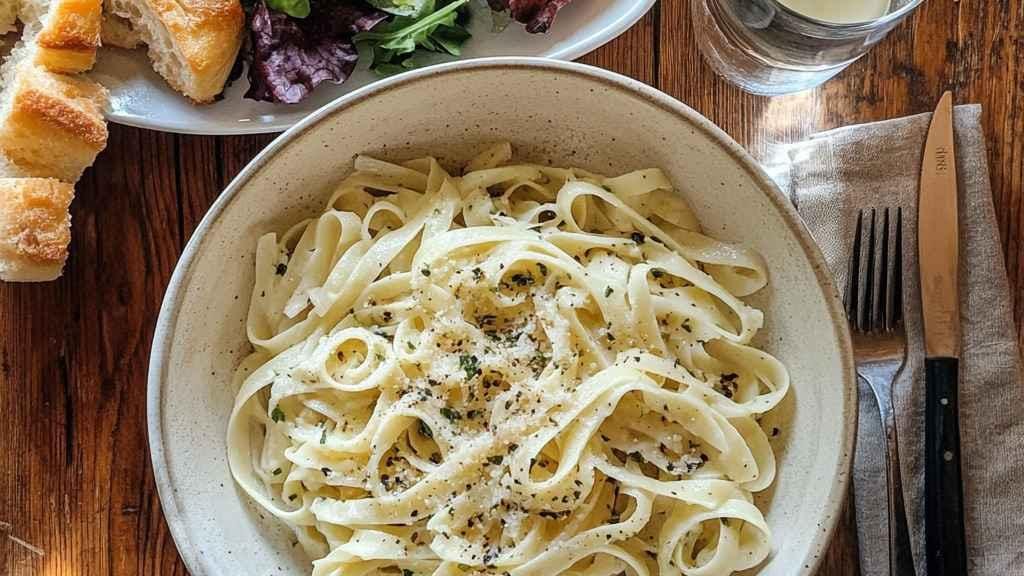If you’re a pasta enthusiast, you’ve likely enjoyed the creamy goodness of Fettucini Alfredo or the rustic charm of fettucini with pesto. This guide dives deep into everything you need to know about this beloved ribbon pasta.
What makes fettucini so popular? It’s all about versatility and tradition. Originating in Italy, it has stood the test of time, becoming a symbol of classic Italian cooking. Want to explore its rich history and modern uses? Let’s dive in!
Table of contents
- A Brief History of Fettucini
- What Makes Fettucini Unique?
- Classic Fettucini Alfredo Recipe
- Exploring Variants of Fettucini
- Nutritional Profile of Fettucini
- Tips for Cooking Perfect Fettucini
- Perfect Pairings for Fettucini
- Frequently Asked Questions About Fettucini
- Why Fettucini Deserves a Place in Your Kitchen
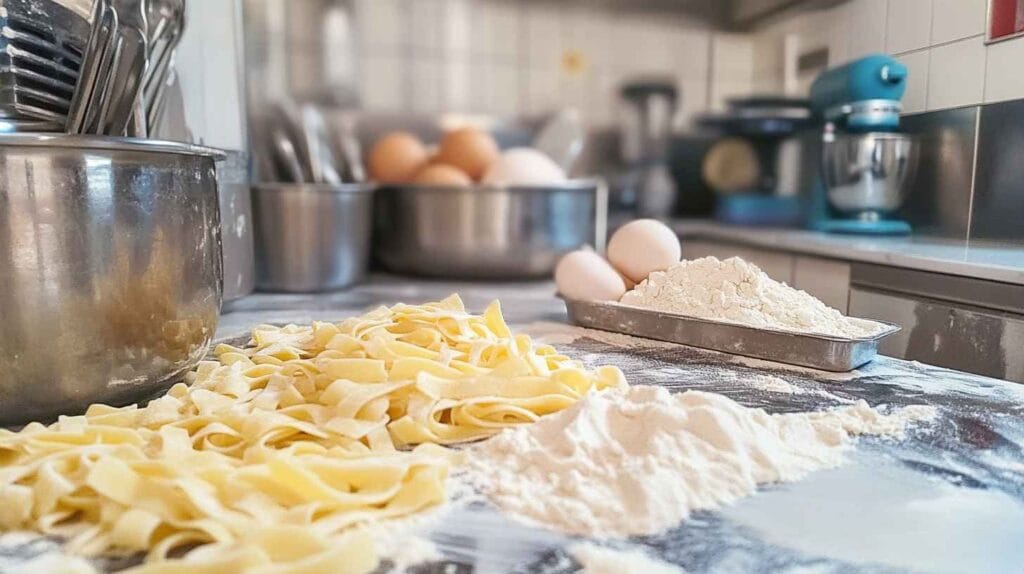
A Brief History of Fettucini
Fettuccine originated in Italy, designed as a thicker, more robust alternative to angel hair pasta. Over centuries, it became a favorite for holding rich sauces like Alfredo or marinara. If you’re looking for more meal inspirations to accompany this classic pasta, you’ll love this Spaghettini recipe.
Today, it is beloved worldwide for its ability to pair seamlessly with both simple and luxurious sauces. Whether dressed in a creamy Alfredo sauce or tossed with light olive oil and herbs, its charm lies in its adaptability.
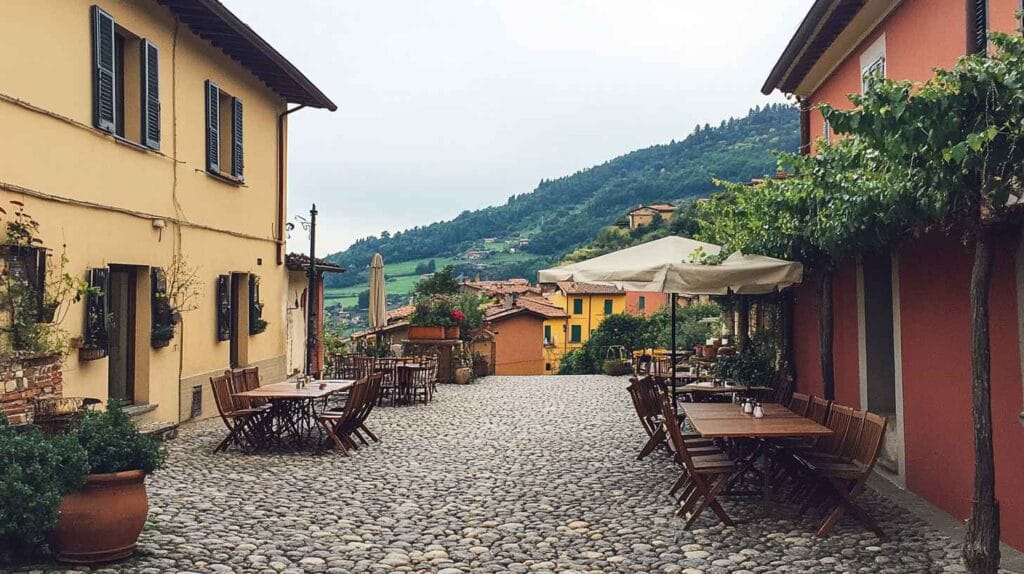
What Makes Fettucini Unique?
What sets it apart from other types of pasta is its distinctive shape and texture.Unlike round pasta such as spaghetti, fettuccine is flat and wide. This shape isn’t just for looks—it’s designed to hold onto rich, creamy sauces, making every bite flavorful. It’s why dishes like Fettucini Alfredo are so satisfying.
Traditionally, it is made with a dough that includes eggs. Eggs add a richer flavor and a firmer texture to the pasta, making it ideal for pairing with hearty ingredients like mushrooms, seafood, or creamy cheese sauces. Compared to similar pasta like tagliatelle, it is slightly thicker, making it ideal for sauces that need a sturdy base.
Beyond its texture, it stands out for its versatility. Whether you’re looking for a quick weeknight meal or something fancy for guests, this pasta fits the bill. Curious about how to make it from scratch? This guide to traditional pasta recipes offers helpful tips.
Classic Fettucini Alfredo Recipe
One of the most famous ways to enjoy it is in the classic dish, Fettucini Alfredo. This recipe combines simple ingredients to create a rich, creamy sauce that clings perfectly to the pasta ribbons. The best part? It’s easy to make at home and perfect for impressing family or friends.
Ingredients:
- 250 grams of fettucini
- 1 cup heavy cream
- ½ cup unsalted butter
- 1 cup freshly grated Parmesan cheese
- Salt and pepper to taste
- Optional garnish: fresh parsley or grated nutmeg
Instructions:
- Cook the Pasta by bringing a large pot of salted water to a boil. Add the fettucini and cook until al dente (just tender with a slight bite). Save ½ cup of the pasta water, then drain.
- Prepare the sauce by melting butter in a large pan over medium heat. Stir in the cream and cook gently for 2-3 minutes, being careful not to boil.
- Add the Cheese: Gradually whisk in the Parmesan cheese until it melts and blends smoothly into the sauce. If the sauce is too thick, stir in a splash of the reserved pasta water.
- Combine and Serve: Toss the drained it in the sauce until fully coated. Season with salt and pepper to taste. Serve immediately, garnished with parsley or nutmeg if desired.
With just a few ingredients, you can create a dish that’s both comforting and elegant. This recipe highlights why it is such a beloved pasta. For more inspiration, explore this resource on creamy pasta dishes.
Exploring Variants of Fettucini
While Fettucini Alfredo is a timeless classic, this versatile pasta can be transformed into many other delicious dishes. From light and fresh to rich and hearty, there’s a fettucini recipe for every occasion. Here are some of the most popular options:
1. Fettucini with Pesto Sauce
For a fresh, herby twist, try it with pesto. This dish combines the bright flavors of basil, garlic, pine nuts, Parmesan, and olive oil. Simply toss cooked it with your favorite pesto and garnish with extra cheese or cherry tomatoes.
2. Mushroom and Garlic Fettucini
This recipe is earthy and comforting, perfect for chilly evenings. Sauté sliced mushrooms in butter and olive oil, then add minced garlic and a splash of cream or white wine. Toss in your fettucini and finish with a sprinkle of parsley and grated Parmesan.
3. Seafood Fettucini
For a luxurious take, combine it with fresh seafood like shrimp, scallops, or salmon. Cook the seafood in olive oil and garlic, then add a splash of lemon juice and cream. Toss with it for a dish that feels like a restaurant meal.
4. Fettucini Primavera
This colorful vegetarian dish is bursting with fresh vegetables like zucchini, bell peppers, and cherry tomatoes. Sauté the veggies in olive oil with garlic, then toss with fettucini and a sprinkle of Parmesan. It’s light, healthy, and perfect for spring or summer.
5. Spicy Tomato Fettucini
For those who love a bit of heat, toss it with a spicy tomato sauce. Use crushed red pepper flakes, garlic, and a rich marinara sauce to create a bold, flavorful dish.
These recipes show just how adaptable fettucini can be, making it a pasta you’ll never tire of.
Nutritional Profile of Fettucini
When it comes to nutrition, it offers a mix of carbs and proteins, making it a satisfying choice for many meals. Its exact nutritional value depends on how it’s prepared, but let’s break down the basics to understand what this pasta brings to the table.
Key Nutritional Facts
- Calories: Traditional fettucini made with eggs and flour has about 220-250 calories per cup.
- Carbohydrates: It’s rich in carbs, providing quick energy ideal for athletes or active individuals.
- Protein: Egg-based it contains more protein than pasta made without eggs, offering around 7-9 grams per serving.
- Fiber: While white fettucini is lower in fiber, whole-grain versions can provide up to 4 grams per serving.
Health Benefits
- Energy Boost: The carbs in fettucini make it a great choice for a pre-workout meal or a busy day.
- Rich in Nutrients: Egg-based fettucini adds essential nutrients like B vitamins and iron.
- Versatile Pairings: Pairing it with fresh vegetables, lean proteins, or olive oil can make it part of a balanced meal.
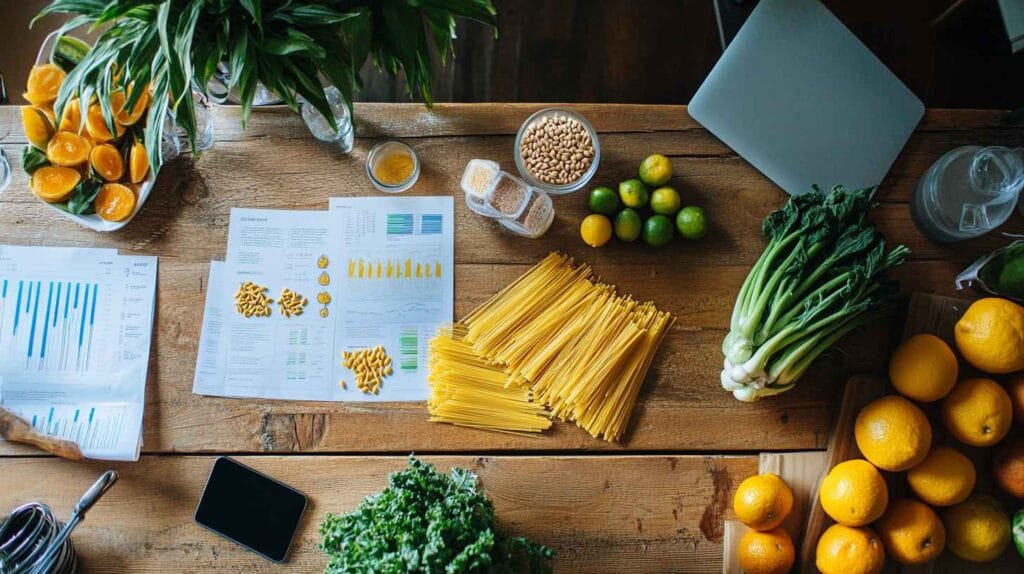
Diet-Friendly Options
- For a lower-calorie meal, use zucchini noodles or a gluten-free alternative.
- To increase fiber and nutrients, choose whole-grain fettucini.
- To meet dietary restrictions, try chickpea- or lentil-based pasta for a gluten-free, high-protein option.
By adjusting your ingredients and pairings, you can tailor fettucini dishes to fit various nutritional needs.
Tips for Cooking Perfect Fettucini
Cooking it to perfection isn’t just about boiling water—it’s about mastering the little details that make your pasta shine. Follow these tips to ensure your fettucini is delicious every time.
1. Use Plenty of Water
- Always use a large pot of boiling water. This prevents the pasta from sticking together and helps it cook evenly.
2. Salt the Water Generously
- Add about 1-2 tablespoons of salt for every 4 liters of water. This step enhances the pasta’s flavor.
3. Cook Until Al Dente
- Follow the package instructions, but begin checking the pasta 1–2 minutes before the suggested time. It should be tender yet slightly firm to the bite.
4. Reserve Some Pasta Water
- Before draining the fettucini, save about ½ cup of the cooking water. The starchy water helps thicken sauces and binds them to the pasta.
5. Don’t Rinse After Draining
- Rinsing washes away the starch that helps the sauce cling to the pasta. Instead, toss the hot pasta directly into your sauce.
6. Toss Pasta in the Sauce
- Instead of pouring sauce over the fettucini, mix them together in a pan over low heat. This helps the pasta absorb the flavors and ensures an even coating.
7. Serve Immediately
- Pasta is best enjoyed fresh and hot. If you need to keep it warm, cover it and place it in a low-temperature oven for a short time.
Bonus Tip: Add Flavor to the Water
- For an extra layer of flavor, consider adding a bay leaf or a splash of olive oil to the boiling water.
By following these steps, your fettucini dishes will taste as good as those served in authentic Italian restaurants.
Perfect Pairings for Fettucini
it is versatile and pairs beautifully with a variety of side dishes and beverages. Whether you’re hosting a dinner party or enjoying a cozy meal at home, these pairings can elevate your pasta experience.
1. Side Dishes
- Garlic Bread: The buttery, garlicky flavor complements creamy or tomato-based fettucini sauces.
- Roasted Vegetables: Options like asparagus, zucchini, or bell peppers add a healthy and colorful touch to your meal.
- Caprese Salad: A light mix of tomatoes, fresh mozzarella, basil, and balsamic glaze provides a refreshing balance.
- Caesar Salad: The tangy dressing and crunchy croutons pair well with the richness of Fettucini Alfredo.
2. Beverages
- Sparkling Water with Lemon: A refreshing option that cleanses the palate between bites.
- Non-Alcoholic Wine or Grape Juice: These drinks mimic the sophistication of wine without the alcohol.
- Herbal Teas: A cup of chamomile or mint tea is soothing and complements light fettucini dishes.
3. Desserts
- Tiramisu: This classic Italian dessert makes for a perfect finish to a fettucini meal.
- Panna Cotta: Its creamy texture and subtle sweetness pair well with any pasta dish.
- Fresh Fruit Salad: For a lighter option, a medley of fresh berries and citrus fruits works wonderfully.
Bonus Tip: Customized Pairings
- Pair creamy fettucini sauces with lighter, zesty sides.
- For rich, tomato-based dishes, opt for hearty salads or bread.
With these pairings, you can create a well-rounded meal that enhances the flavors of your fettucini dish while adding variety to your table.
Frequently Asked Questions About Fettucini
Here are some of the most common questions people ask about it. If you’ve ever wondered how to cook or enjoy this pasta, you’ll find the answers below.
1. What is the difference between fettucini and tagliatelle?
While both are ribbon-shaped pastas, the main difference lies in their thickness and origin. it is slightly thicker and is popular in Roman cuisine, whereas tagliatelle is thinner and commonly used in Emilia-Romagna.
2. Can I make it without eggs?
Yes, you can! Eggless fettucini is a great option for vegans or those with dietary restrictions. Use flour and water to create a simple dough, or try store-bought egg-free options.
3. How do I store leftover fettucini?
To store leftovers:
- Place the fettucini in an airtight container.
- Add a small amount of olive oil or sauce to prevent it from sticking.
- Refrigerate for up to 3 days. To reheat, add a splash of water or broth and warm it gently on the stove or in the microwave.
4. What are some gluten-free options for fettucini?
Several brands offer gluten-free fettucini made from alternative flours like rice, chickpea, or quinoa. These options provide a similar taste and texture while being safe for those with gluten sensitivities.
5. What is the origin of Fettucini Alfredo?
Fettuccine Alfredo was created in Rome in the early 20th century. It was created by Alfredo di Lelio, who made the dish to please his pregnant wife. The dish gained international fame when Hollywood actors brought its recipe back to the U.S.
6. How do I prevent my fettucini from sticking together?
To avoid sticky pasta:
- Use plenty of boiling water.
- Stir occasionally while cooking.
- Toss the drained pasta immediately with sauce or a drizzle of olive oil.
This FAQ section covers the most common queries about fettucini. If you have more questions, don’t hesitate to ask or explore additional resources.
Popular Variants of Fettucini
While Fettucini Alfredo is the most famous version, there are countless ways to enjoy this versatile pasta:
- Fettucini with a creamy mushroom sauce.
- Spicy tomato fettucini for a bold kick.
- A lighter version with fresh vegetables and olive oil.
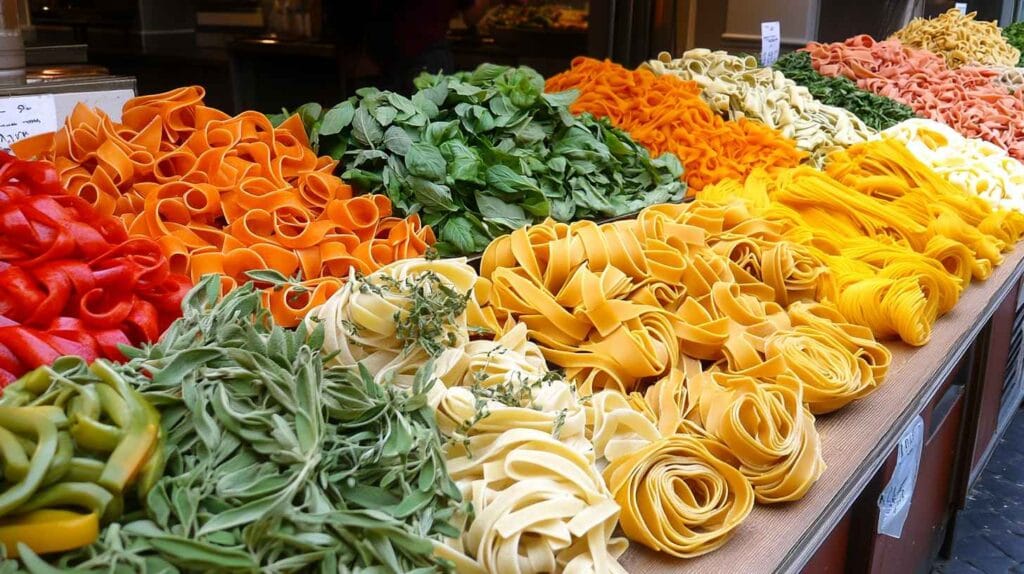
Why Fettucini Deserves a Place in Your Kitchen
Fettucini is more than just a pasta, it’s a versatile canvas for culinary creativity. Whether served with a simple olive oil drizzle or as part of an elaborate Alfredo dish, it’s a staple worth mastering. For more tips and recipes, visit the Spaghitini for ideas that will inspire your next meal.

